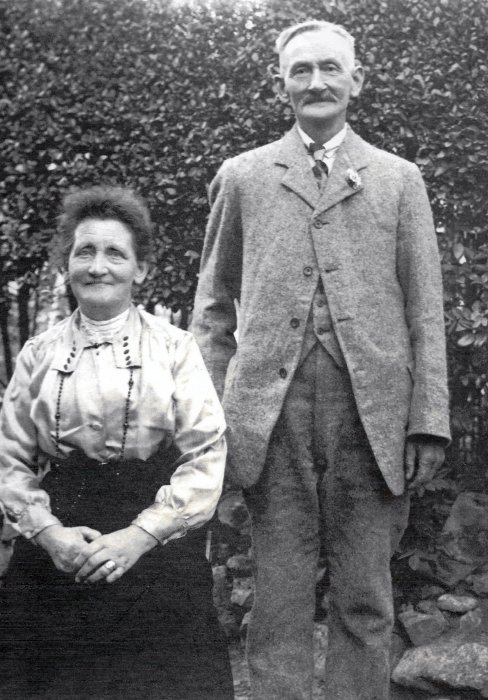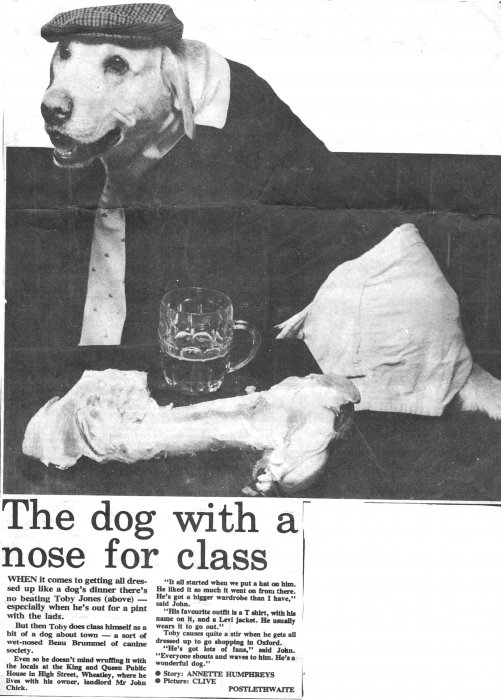The King and Queen
Typed notes, a photo of Charles Heath and Elizabeth Heath, publicans of the King & Queen 1901-1911, and a newspaper cutting and photo about Johnnie Chick's beer-drinking dog Toby Jones!
Parts of this building date back to the 16th century. It has been in continuous use as a public house since around this time and remains so today. It is believed to have been first named after King Charles I and Queen Henrietta Maria, but with the fall of the King in the Civil War, this name might not have endured. Apparently, however, it was re-named ‘William and Mary’ after these monarchs reigned in 1689-1702, and later changed to its current name. The list of licensees record states that it was first recorded in 1702, the year in which King William died and this fits in with the understanding that an inn may not be named after a reigning monarch.
Listing details state 'Inn, now public house. Late C16/early C17, remodelled mid C18. Squared coursed limestone rubble and ashlar dressings; plain-tile roof and brick stacks. 4-unit main range with 2 rear wings. 2 storeys plus attics. 5-window front has centre bays breaking forward with 2 rendered gables, plinth and second-floor storey band, 2-light casements with keyblocks, and entrance to right of centre with wide triangular-pedimented architrave. Gables have 2-light casements. Bay to right of break has stone flat arches; bay to left has 3-light stone-mullioned window at first floor with ovolo mouldings and label,and a similar 2-light window below has been blocked by a 4-light casement. Left end gable has a stone parapet and brick stack, and one bay to right is a large stack with 2 diamond shafts. Lower irregular rear wings have casements and dormers. Interior: Tudor-arched moulded stone fireplace in main range and large open fireplace with bressumer in rear wing'.
(V.C.H.: Oxfordshire, Vol V, p.109).
The profits of the King and Queen soared between 1702 and 1763, possibly because of the start of the private coach trade.
In the 1940s and/or 1950s, the landlord was Bernard Perkins aided by his wife, Mrs Perkins. At around this time, the pub garden was 'halved' on either side so as to provide a car park accessed from Church Road.
In the 1980s, the landlord was Johnny Chick.




